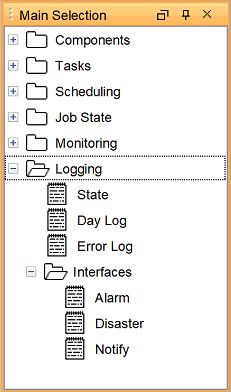4 4 3 Beefalo:User Manual
| Note | |
|
This User Manual is valid for SEP sesam versions Beefalo (4.4.3.70) to Jaglion (5.0.0.x).
|
Introduction
Welcome to SEP sesam
SEP sesam hybrid backup and disaster recovery solution is a high-performance solution for protecting data in hybrid environments – physical, virtual and cloud – of any size. Supporting the widest range of operating systems (Microsoft, VMware, SAP, etc.), databases and applications, SEP is the perfect solution for IT professionals managing data protection and business continuity.
A comprehensive portfolio of modules ensures uninterrupted data protection for a wide variety of applications and databases, including SAP HANA on Intel & IBM Power platforms, SAP NetWeaver & SAP ASE.
The SEP sesam multi-streaming technology enables extremely fast, simultaneous backups of an unlimited number of servers to different backup media such as disk, tape and cloud. After a disaster, SEP sesam Si3 replication technology offers a fast and located independent recovery of single files up to the complete system. In addition, companies with SEP sesam are hardware and software independent, which makes it possible to consolidate several backup systems into a centrally managed backup solution such as SEP sesam. This enables IT managers to flexibly adapt their infrastructure to the constantly growing requirements.
SEP sesam concepts and principles
Grouping of SEP sesam Components
Media Strategy
SEPuler - an event calendar
Backup
Restore
Duplication and Migration
Storage Time Limit, Media Cycle
Basic backup configuration
Make sure that the hardware and software requirements are met before configuring SEP sesam backup. For details, see SEP sesam Requirements.
Step 3: Storage Hardware - Drives and Loaders
Step 5: Tasks - Select what you want to back up
Directory structure of SEP sesam software
For details on SEP sesam directories, see Directory Layout.
SEP sesam user interfaces
SEP sesam offers three interfaces with which you can manage the system: Command line interface (CLI), Graphical User Interface (GUI) and Web UI.
While CLI and the GUI can be used to configure the SEP sesam environment, the Web UI allows you to securely monitor your environment from anywhere: You can use it to check the status of SEP sesam events, datastores, system logs, etc., as well as perform various operations such as starting or locking backups, restarting failed jobs, and starting online restores with the Restore Assistant.
The SEP sesam GUI consists of different areas, as described in SEP sesam Graphical User Interface (GUI). This manual describes the features and functions of the GUI. For details about Web UI and CLI, see SEP sesam Web UI and SEP sesam CLI.
Menu bar and Toolbar

In the menu bar, you can find the menus File, Activities, Configuration, Window and Help.
Toolbar
File
Activities
Configuration
Window
Help
Components

Topology
Clients
Data Store
Loaders
Drives
Media Pools
Media
Tasks

Under the Tasks menu, you can configure backup, restore, migration and Si3 replication tasks.
By Clients
By Groups
Backup Plans
Migration Tasks
Replication Tasks (Si3)
Tasks as List
Scheduling

SEP sesam establishes schedules as a frame, to which you link different events, such as backup, migration, replication, etc. A schedule defines the recurrence of an event and may be executed in minutes, hours, days, months or years.
Schedules
Events
Events as List
Calendar Sheet
Job state

Under the Job State, you can check the status of all jobs (backups, restores, migrations, etc.).
All Results by State
Backups
Restores
Migrations and Replications
Media Actions
Monitoring

Monitoring provides several features, including a dashboard (displays the state and other details of your backups and restores), last backup state (shows the last status of each configured backup job), shows all running processes/daemons, and the status of all used disk drives (information on queue).
Dashboard
Last Backup State
Processes
Drives
Notification Center
RSS Feeds
Logging

SEP sesam creates two protocols or log files for each backup day: the status file and the day log. These files are available in <SESAM ROOT>/var/prot. It is recommended to use the SEP sesam log files to detect operations that caused errors or malfunctions, for example, in case of a failed backup. For details, see Analyzing SEP sesam Log Files.
State
Day Log
Error Log
Interface Logs
